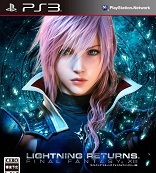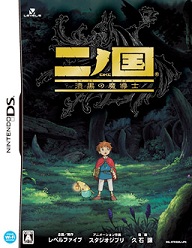« White Knight Story: 10 screenshots | Main | Tales of Hearts: 19 screenshots, direct comparison of CG, anime styles »
Soldier’s Quest hands-on preview
By Heath | September 22, 2008 at 11:12 pm
When it comes to the RPG Maker series of engines, there’s more misses than most Reform-Mormon families. For every game like Barkley: Shut Up and Jam Gaiden or Aveyond there’s at least a dozen poorly inspired and half-finished games made by fans of the JRPG genre who really don’t understand what makes a good game (although boy, would they ever like to create a game and be recognized for it!). Soldier’s Quest: Legend of the 7 Holy Maidens falls into this later category.
The story (which is poorly written in both English and Spanish) begins with the tale of “the existence of powerful dark power capable of destroying everything it touches.” This power was “Bloodlines,” which was held and wielded by the Nox hierarchy. Despite how dark this power was, the Nox chose to use it only to better themselves and their own civilization. This, of course, made all the normal people become jealous of the Nox and slay the ever-loving feces out of them. This angered the Nox leader, who used his Bloodlines to destroy the world! It almost worked until the titular Seven Holy Maidens came together to put a seal on the power. The Nox died, and everybody else lived happily ever after.
 |
| Really clunky, just plain bad script writing… |
The story then focuses on Heath Warfare, who awakes at nine in the morning to realize that it’s both early, and that he’s late to speak with the King. After meeting up with Rey David he joins up with his childhood friend Claire to go find the Crimson Assassin. The Crimson Assassin is a really bad guy, as can be seen in the beginning where he gets a scene dedicated to him one-shotting a group of soldiers. No motive is provided for these deaths; one can only assume that the Crimson Assassin acts this way because he’s crabby from getting up even earlier in the morning. In the events of the demo, the players defeat the Crimson Assassin in combat, before he mysteriously points out he’s unscathed and uses his magics to kill the party. Claire admits that she’s one of the Seven Holy Maidens (the sixth, in fact), admits she loves the hero, and unleashes a power that kills the Crimson Assassin… yet also kills her, unleashes one of the seven seals on Bloodlines. Heath, angered that he allowed a woman to die, plots his revenge.
It is obvious, based on the story itself, that the author has an account at clichébucket.com. The story is, in a nutshell, one part Zelda: Link to the Past, and two parts any early Tales game, without any of the things that made those stories fun or innovative.
The Gameplay screams “I’m a game made on RPG Maker 2003 with no thought put into customization.” Characters learn skills by purchasing tomes, which are then equipped on the character; they are then quickly forgotten, because magic is fairly useless in this game and outside of “Heal All” it makes far more sense to just hit “attack” repeatedly. Monster difficulty is largely unbalanced, monsters themselves are largely uninspired, maps look like they were put together as the designer went along with no real though to layout or placement, and traveling the over world is exceptionally boring.
One of my absolute favorite parts of the game probably shouldn’t have been. There’s this white mage, er, “Magician” who will heal the character for free whenever she is spoken to. She appears right before every major fight in the game, including a fight in which Heath must save an archer from man-eating plants. Seriously, on the map, this archer is being attacked by plants, and she just stands there not doing anything, only a dozen tiles away, only stopping to help the main character if asked. That’s poor level design, right there.
The graphics are average 16-bit fare. This is for good reason: every sprite in the game is either stock from RPG Maker graphics, or taken from another video game. There is not an original sprite to be found here. Several sprites are given a color swap from their originals, but just as many (especially objects) remain intact from the games they once came from. Real sprite artists create their works from scratch; inexperienced sprite artists may refer to actual sprites to learn from but certainly don’t just decide to change the color of an existing sprite and slap them in a game.
 |
| …But what could we expect, when it’s penned by this guy? |
The music is all taken from other games as well. There isn’t even any of the stock music used here; each musical soundtrack was taken from another game, modified only so that it would inexplicably screw up whenever it needs to loop. To the creator’s credit, towards the end, he does list where every song came from (unlike his list of sprite credits, which seem almost purposefully vague).
Overall, Soldier’s Quest is not just painfully generic, it’s also a prime example of how not to create an RPG. It isn’t fun to play, it isn’t fun to see established work from commercial games bastardized, and it isn’t fun to read through the numerous errors found in the English script that could have easily been caught and fixed in the year it was translated. According to the credits, more of this game will be available on “Release Something Day IV.” Even Wein Cruz will be unenthused.
-Tim Olsen
Topics: Indy games, Previews








